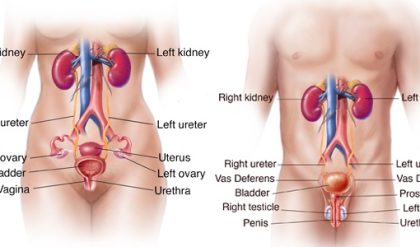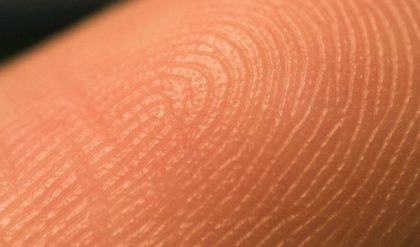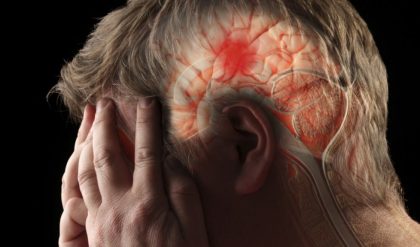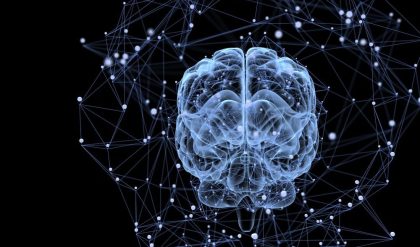How does the brain instruct us to breathe ten times per minute? What controls this respiratory rhythm? How do neurons communicate and coordinate their activity? Understanding how the brain functions from a quantitative point-of-view the domain of the neural engineer is (a.k.a. neuroengineer).
Neural engineers are interested in understanding, interfacing with and manipulating the nervous system. Computational neuroscientists are creating computer models of neural systems down to the level of single neurons. Scientists are also exploring how neurons communicate with one another by taking recordings from actual neurons and having those recordings “interact” with recordings from other neurons. Using quantitative techniques, the nature of these communications are being measured and analyzed. One benefit of understanding this communication is to provide new ways to interface between neural tissue and manmade technologies. This is known as brain-machine interfacing.
The Bionic Arm
One of the most striking examples of neural engineering—specifically brain-machine interfaces—is the bionic arm. The DEKA Arm, for example, is currently in clinical trials at the VA. With hundreds of US soldiers coming home from Iraq and Afghanistan having had their arms amputated, the VA wanted to provide an artificial limb far more advanced than the basic hook used since World War II. DARPA (the Defense Advanced Research Projects Agency) challenged Segway inventor, Dean Kamen, to create an arm that would allow amputees to pick up a raisin or grape and know the difference without looking at it. The hand could be no larger than an average human hand and weigh no more than nine pounds.
The DEKA Arm was developed by a team of over 300 scientists—comprised of engineers, neuroscientists and psychologists—from DARPA and Kamen’s DEKA Research and Development Corporation.
Control of the fully functioning hand is directed by a patient’s nervous system since the nerves that come from the spinal cord are still available in the shoulder. As an amputee simply thinks about moving their missing hand, the brain fires electrical impulses that are detected by electrodes in the prosthesis. So there is no real learning curve for the amputee. Additional control over the arm is generated by pressing buttons built into the patient’s shoes.
Beyond control of the arm and hand, there was still the grape vs. raisin challenge to conquer. The resulting neural interface had to account for position, touch and pressure, with haptic perception achieved using sensors that vibrate according to the intensity of the grip to provide cognitive feedback.
So the DEKA Arm both recognizes signals from the brain (efferent) and relays signals back to the brain (afferent).
Disrupting Neurocircuitry
By understanding how neurons work, biomedical engineers specializing in neural engineering can look for ways to either stimulate or disrupt this neurocircuitry. Implantable devices similar to the pacemakers used in the cardiac setting could be used to control nervous system disorders such as Parkinson’s disease, depression and epilepsy. California-based NeuroPace, Inc., is currently in clinical trials with their responsive neurostimulation (RNS®) system, which monitors and interrupts abnormal electrical activity in the brain before seizures occur.
If we think of nerves as wires, these wires—or neurocircuits—can either be stimulated or blocked. In the not-too-distant future, high frequency electrical stimulation could be used on peripheral nerves in the arms and legs to selectively block some communication—pain, for example—without interfering with other communication. The ability to give highly localized and reversible anesthesia would be one application of this technology. Another is bladder control. Most bladder control problems are actually the result of the inability to control the neurons that indicate to a person whether they need to urinate. High frequency electrical stimulation via an external device could be used to help coordinate activities that the body can no longer control; especially useful for those who are paralyzed.
Visual Prostheses
An artificial retina could soon become reality as many groups are developing devices to replace damaged retinas. A consortium of researchers in Australia, for example, are working on technologies to restore sight to people with degenerative vision loss due to either retinitis pigmentosa or age-related macular degeneration. In both conditions, there is a problem in the part of the eye that senses light but the neural circuitry and visual processing ability of the brain is still intact.
Using a camera attached to a pair of glasses, signals are transmitted to a microchip implanted in the retina. From here, small electrical currents are sent to surviving neurons in the brain. Current technology limits the number of implanted electrodes to about 100, so the resolution captured by the camera is processed and reduced to create rudimentary images. But these images can make a world of difference to someone who otherwise cannot see.
The Australian technology will not be tested in humans until at least 2013 and would take several more years before it reaches the market. in California is currently in clinical trials on a similar retinal prosthesis system that offers 60 electrodes. And a has taken a different approach that offers more electrodes, but they are not encapsulated and, therefore, not long-lasting. The German solution is also being tested in humans.
Some of the research in neural engineering sounds like science fiction but is actually science fact. We have seen a in a dish; a and a turning left or right with the press of a button.
Neural engineering incorporates a diverse array of disciplines, including neuroscience, mathematics, engineering, biophysics, computer science and psychology. This important work is providing new insights into our understanding of dementia, Parkinson’s, brain injury, strokes and other neurologic deficits.
Biorobotics
With an understanding of biomechanics, engineers can develop biologically-inspired robots with improved and enhanced capabilities over traditional robots, which are—how shall we say—robotic! Biologically-inspired robots have greater mobility and flexibility than traditional robots and often possess sensory abilities.
Biorobotic technologies are often utilized to provide assistance to accommodate a deficiency—either as fully-functioning robots or highly advanced prosthetics; the latter represents one area in which neural engineering and biorobotics intersect as both disciplines are required in order to first signal and then generate movement. Such devices may also be used to measure the state of disease, track progress or offer interactive training experiences that can speed recovery from an injury or stroke
Biorobotics encompasses a diverse array of disciplines with a myriad of applications. Researchers in Italy, for example, are developing artificial sensing skin that can detect pressure as contact is made with an object. Tactile sensors are important not only for self-standing robots and limb prostheses but as a means of restoring the sense of touch to diabetics with peripheral neuropathy by mimicking sensations normally gleaned by fingerpads and feet. This one application of biorobotics requires contributions from biomedical engineers studying tissue engineering, neural engineering, biomimetics and BioMEMS.
Italian scientists are also exploring the potential for early diagnosis of autism by monitoring sensory-motor development through mechatronic-sensorized toys, such as rattles with force and contact sensors.
Biorobotics is being used to help train surgeons and dentists using virtual environments that speed the learning process by facilitating epiphanies, or “Aha” moments. It is also being used to assist in actual surgeries, allowing for more precise and less invasive interventions. Endoscopic robots at the tip of a probe can, for example, remove a polyp during a colonoscopy. And mechatronic handheld tools allow surgeons to manipulate their hands at the macro level while affecting similar responses from a mechanical device operating at the micro level. One day, this could even lead to “cellular surgery.”
Key to surgical robotics is the sense of touch, or haptics. Many researchers are exploring how to enhance haptic perception and feedback to allow a surgeon to virtually palpate and squeeze tissue and sense how deep to make an incision.
As robots become more sophisticated and embedded in our lives, Human-Robot Interaction & Coordination (HRI&C) has emerged as a sub-discipline that focuses on the behavior and place of robots in society.
Cardiopulmonary Systems Engineering
Our health is intimately tied to the functioning of our cardiovascular and respiratory systems. So it behooves us to fully understand the system that literally transports our life’s blood, carrying oxygen to all of our vital organs and tissues. The complex electrical and mechanical interactions of the cardiopulmonary system make it well suited to solutions that can be derived through engineering principles and approaches.
Traditional Biomedical Engineering Applications
The classic—and most obvious—examples of biomedical engineering in this area are the artificial heart, stents and pacemakers.
The demand for heart transplants far exceeds the number of donor hearts available; so quite a bit of research has gone into developing and advancing artificial hearts. Those currently on the market—although more advanced than the original Jarvik heart, first implanted in 1982—are still relatively basic and not entirely understood in terms of how they interact with the circulatory system.
Stents that are used to expand constricted coronary arteries have been around for more than 20 years. Research continues into biomaterials that are longer lasting than the original metal stents. These absorbable and drug-eluting stents can help resist rejection by the body.
Pacemakers work in conjunction with the electrical system of the heart. These implantable computers sense the electrical activity of the heart to help control arrhythmias. They can take over when a patient experiences too slow a heart rate (bradycardia) or help control an abnormal heart rhythm (e.g. atrial fibrillation). They can even respond to a person’s level of activity and adjust the heart rate accordingly. Such control has traditionally been accomplished using multiple electrical leads going to each of the heart’s four chambers. New research has resulted in pacemakers with smaller leads. Down the road, pacemakers will no longer need leads at all.
For control and management of patients with a heart rate that is too fast (tachycardia), Implantable Cardioverter Defibrillators (ICDs) are employed. Modern ICDs manage ventricular tachycardias (VTs) and ventricular fibrillation (VF) using a tiered therapy. For fast heart rates below a set limit (typically 180 bpm), overdrive pacing can be employed to bring the rate down to a normal range. For VTs over this set limit and for VF episodes, the ICDs can deliver defibrillation shocks via leads implanted in the patient’s heart.
Medtronic’s EnRhythm® pacemaker delivers electric pulses to both the right atrium and right ventricle, reducing unnecessary pacing to the right ventricle when the heart is in normal rhythm. This Managed Ventricular Pacing (MVP®) can help to reduce the risk of heart failure and atrial fibrillation associated with unnecessary pacing in the right ventricle.
When abnormal rhythms cannot otherwise be controlled, cardiac ablation techniques can be used to destroy defective electrical pathways. Using an ablation catheter, the tissue at the opening of the pulmonary vein is purposefully damaged, either using a laser, by freezing it (cryoablation) or by applying heat (radiofrequency or RF ablation).
Oftentimes, as we age, we experience problems with our aortic valve which must either be repaired or replaced. This has traditionally required open heart surgery. New technologies from companies including Edwards Lifesciences, Abbott and Medtronic would allow treatment using minimally invasive catheters. These catheters are currently in clinical trials.
The work of biomedical engineers is evident throughout the practice of cardiology, from blood pressure monitors to defibrillators to the heart-lung machine used during open heart surgery.
Mathematical Modeling
Much of the recent progress made in the development of diagnostic and therapeutic devices in the cardiovascular area is the result of modeling the cardiopulmonary system.
There are currently several groups involved in detailed modeling of the lungs that describe airflow in and out of the lungs, blood-gas exchange, and so forth. As part of the Physiome Project, multi-scale computer models of various bodily systems are being developed down to the level of a single cell. The project has generated a comprehensive model of the heart—including 3D fluids—that is seen as one of the most successful examples of simulating an entire organ. The resulting model can be used for a variety of applications, including the testing of proposed drug interventions to see how they would affect the functioning of the heart.
Understanding how the heart functions at the mathematical level will enable us to better understand the cardiopulmonary systems of individual patients. Currently, physicians base therapeutic decisions on sporadic readings that are analyzed based on general knowledge from clinical trials and other population-based statistics. But that does not necessarily serve an individual patient. By structuring mathematical equations that provide coefficients that vary for each patient—whether young or old, sick or healthy, male or female—we can provide real-time feedback to achieve better therapeutic outcomes.
One area in which mathematical analysis is coming into play is the evaluation of Holter tape. Using standard equipment, mathematical algorithms will be able to look for patterns within the approximately 115,000 heartbeats captured during a 24-hour EKG monitoring. By analyzing the time between beats, clinicians will be able to detect patterns indicative of congestive heart failure impossible to glean through manual inspection .
What is Neural Engineering?
Abstract
It is only recently that the term Neural Engineering or Neuroengineering first appeared. The emergence of this new field can be attributed to the recognition that engineers, neuroscientists and clinicians should be working together to address the problems associated with the complexity of the nervous system. Neural engineering has generated a lot of excitement not only for the development of interfaces between the brain and computers but for its mostly untapped potential to develop treatment for patients with neurological disorders such as strokes or epilepsy. Now the field has matured significantly as evidenced by its strong and regular presence at various conferences around the world and the growth in the number of published papers in the area. As a result, the scope of the field has evolved and a clear definition of neural engineering is needed. The editorial board of the Journal of Neural Engineering defines the field as follows: `Neural Engineering is an emerging interdisciplinary research area that brings to bear neuroscience and engineering methods to analyze neurological function as well as to design solutions to problems associated with neurological limitations and dysfunction’. The main goal of the field is to solve neuroscience-related problems and to provide rehabilitative solutions for nervous system conditions. The emphasis on engineering and quantitative methodology applied to the nervous system distinguishes neural engineering from traditional areas in neuroscience such as neurophysiology. The integration between neuroscience and engineering separates neural engineering from other engineering disciplines such as artificial neural networks.
Neural engineering is situated between and draws heavily from basic neuroscience on one hand and clinical neuroscience (neurology) on the other. The field of neural engineering encompasses experimental, computational, theoretical, clinical and applied aspects of research areas at the molecular, cellular and systems levels. Although overlap between various topics exists (i.e. neuromodulation and neuroprostheses), all these areas are well established and have recognizable identities.
Neural Engineering Scope
brain-machine (computer) interface
• neural interfacing
• neurotechnology
• neuroelectronics
• neuromodulation
• neural prostheses
• neural control
• neuro-rehabilitation
• neuro-diagnostics
• neuro-therapeutics
• neuromechanical systems
• neurorobotics
• neuroinformatics
• neuroimaging
• neural circuits: artificial and biological
• neuromorphic engineering
• neural tissue regeneration
• neural signal processing
• theoretical and computational neuroscience
• systems neuroscience
• translational neuroscience
However, the definition and scope of neural engineering are best determined by the scientists and engineers that practice it and this is only an overview of the field as it is understood today. The future of this exciting new field will be determined not by what we believe neural engineering should be but by its success in improving human health and quality of life through restoration and enhancement of the function of the nervous system.




